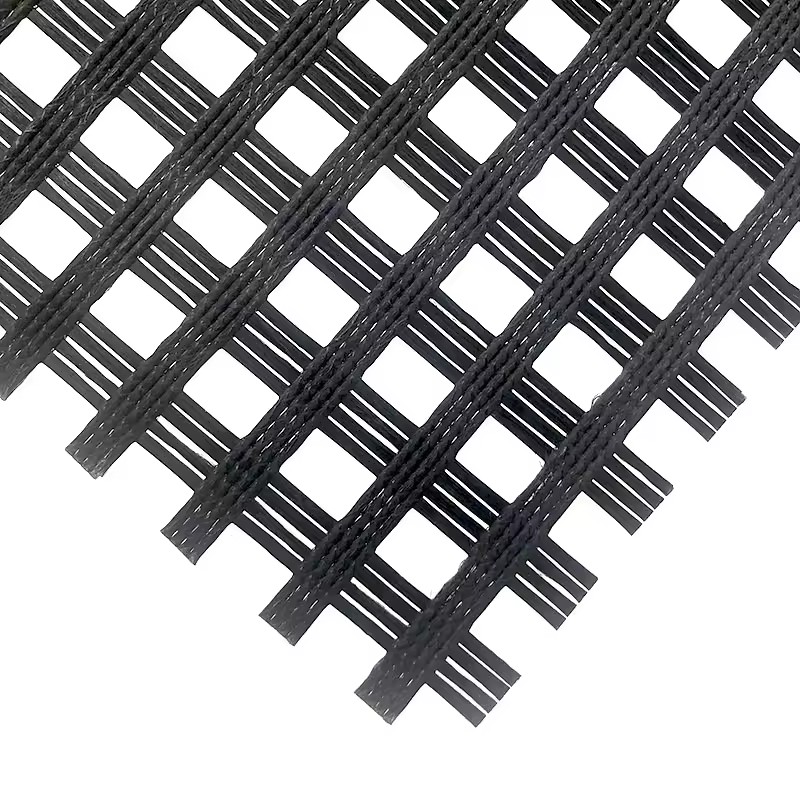
Privacy statement: Your privacy is very important to Us. Our company promises not to disclose your personal information to any external company with out your explicit permission.
Select Language

Reflection cracks are a common disease phenomenon in asphalt pavement. According to the practice of road engineering at home and abroad, laying a layer of geotextile between the asphalt surface layer and the CIMC asphalt mixture layer or the rough set asphalt mixture layer can be used to eliminate or reduce the occurrence of reflective cracks in the surface layer, thereby prolonging the road. Service life, reduce maintenance costs. However, as the temperature of the asphalt pavement is as high as 160°C-180°C, the geotextile wrinkles, deforms, softens, and greatly degrades its performance. It is not only difficult to eliminate or reduce the occurrence of reflective cracks in the surface layer, but also makes the asphalt pavement more uneven. The specific performance of the fiberglass geogrid fully satisfies the requirements of asphalt pavement. At present, many projects have used fiberglass geogrids.
When applied to asphalt roads, glass fiber can play a role in the following aspects.
(1) Fatigue cracking
Asphalt pavement must have a certain load-bearing capacity, and no fatigue damage can occur within the prescribed time. The asphalt pavement is under pressure in the lower layer that is in direct contact with the wheel. In the area outside the wheel load edge, the surface layer is subjected to a pulling force. Because the forces in the two force areas are different in nature and close to each other, they are in two pieces. At the junction of the force area, the force at the abrupt change occurs, and under the long-term load, fatigue cracking occurs.
In the asphalt surface layer, the fiberglass geogrid can disperse the above-mentioned compressive stress and tensile stress, forming a buffer zone between the two force-receiving regions, and reducing the damage caused by the stress mutation to the asphalt surface layer. At the same time, the low elongation of the glass fiber geogrid reduces the amount of deflection of the road surface and ensures that the road surface will not be excessively deformed.
(2) Heat resistant car
Asphalt concrete has a rheological behavior at high temperatures. Under the action of vehicle loads, a depression occurs in the stressed area. After the vehicle load is removed, the asphalt surface cannot be completely restored to its original state, ie, plastic deformation occurs. Under the effect of repeated rolling of the vehicle, Plastic deformation continues to accumulate and form ruts. Through the analysis of the asphalt surface structure, it can be seen that the bituminous concrete under high temperature is subject to the rolling action of the load and forms a trace of rheological flow. There is no skeleton material that can restrict the asphalt concrete rheology in the surface layer, resulting in the rheology of the asphalt surface layer. The cumulative superposition, which is the foundation of the formation of rutting.
The use of fiberglass geogrid in the asphalt surface layer plays a role of skeleton in the asphalt surface layer. The aggregate of asphalt concrete penetrates through the grid to form a composite mechanical interlocking system, limiting the movement of aggregates and increasing the amount of asphalt surface. The horizontal restraint in the layer, the various parts of the asphalt surface are pinned to each other, prevent the asphalt surface from moving, and thus play a role in resisting rutting.
(3) Low temperature shrinkage
During the cold period, the temperature of the asphalt concrete surface layer was close to the air temperature, and the asphalt crucible was subjected to cold shrinkage, resulting in tensile stress. Under repeated loading, the tensile stress further increased. When the tensile stress exceeded the tensile strength of the asphalt concrete, cracks occurred. At both ends of the crack, the tensile stress is more concentrated, cracks gradually form cracks, causing disease.
The fiberglass geogrid is placed in the asphalt, so that the tensile strength of the asphalt concrete is greatly improved, and it is sufficient to resist large tensile stress without road damage. Even if a micro crack occurs in a local area, the stress at the crack concentrates. The transmission of fiber geogrid disappears, cracks do not develop into cracks.
(4) Delay reflective cracks
There are two kinds of reflections produced by cracks. One is that cracks occur in the surface layer, the cracks reflect downwards, damage the underlying structure, and reduce the strength of the pavement structure. In the rainy season, water enters the cracks, and the traffic load (tire pressure) repeatedly arrives. Pressing, water generates water pressure in the cracks, and the water constantly hits the asphalt mixture, causing cracks to expand. The other is the original cracks in the old surface layer. The cracks produced in the road base layer or the base layer of the lower layer are reflected upward. The new cover pavement cannot withstand the shear force and tensile stress due to the movement of the bottom layer, resulting in cracks in the pavement surface layer.
The fiberglass geogrid sandwich is added in the asphalt overlay to suppress stress, release strain and enhance the strength of the asphalt concrete so as to prevent the crack from reflecting upwards or downwards.
August 16, 2024
April 11, 2024
July 12, 2023
July 10, 2024
April 24, 2024
July 15, 2024
October 16, 2024
이 업체에게 이메일로 보내기
August 16, 2024
April 11, 2024
July 12, 2023
July 10, 2024
April 24, 2024
July 15, 2024
October 16, 2024

Privacy statement: Your privacy is very important to Us. Our company promises not to disclose your personal information to any external company with out your explicit permission.

Fill in more information so that we can get in touch with you faster
Privacy statement: Your privacy is very important to Us. Our company promises not to disclose your personal information to any external company with out your explicit permission.